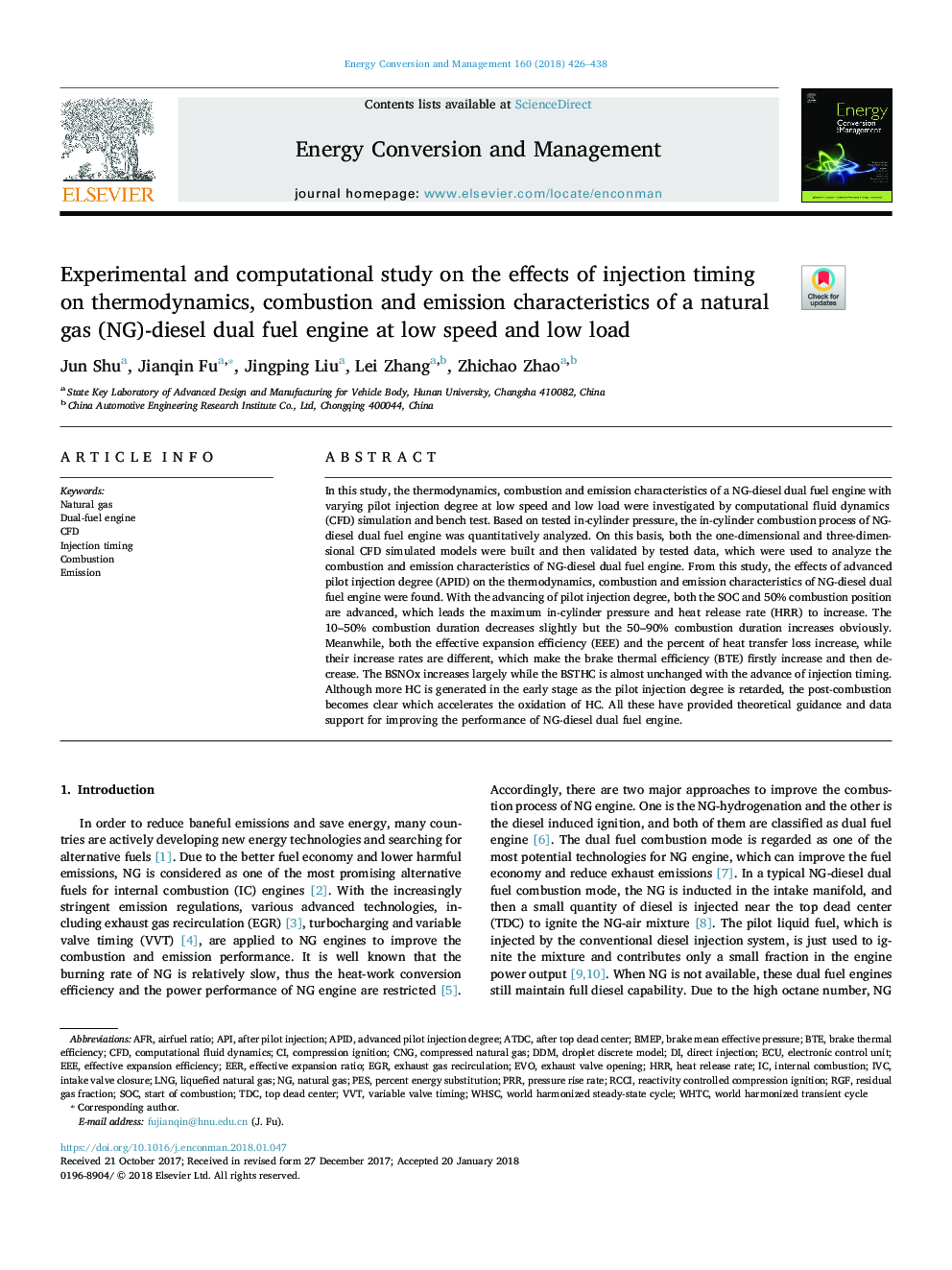| Article ID | Journal | Published Year | Pages | File Type |
|---|---|---|---|---|
| 7159027 | Energy Conversion and Management | 2018 | 13 Pages |
Abstract
In this study, the thermodynamics, combustion and emission characteristics of a NG-diesel dual fuel engine with varying pilot injection degree at low speed and low load were investigated by computational fluid dynamics (CFD) simulation and bench test. Based on tested in-cylinder pressure, the in-cylinder combustion process of NG-diesel dual fuel engine was quantitatively analyzed. On this basis, both the one-dimensional and three-dimensional CFD simulated models were built and then validated by tested data, which were used to analyze the combustion and emission characteristics of NG-diesel dual fuel engine. From this study, the effects of advanced pilot injection degree (APID) on the thermodynamics, combustion and emission characteristics of NG-diesel dual fuel engine were found. With the advancing of pilot injection degree, both the SOC and 50% combustion position are advanced, which leads the maximum in-cylinder pressure and heat release rate (HRR) to increase. The 10-50% combustion duration decreases slightly but the 50-90% combustion duration increases obviously. Meanwhile, both the effective expansion efficiency (EEE) and the percent of heat transfer loss increase, while their increase rates are different, which make the brake thermal efficiency (BTE) firstly increase and then decrease. The BSNOx increases largely while the BSTHC is almost unchanged with the advance of injection timing. Although more HC is generated in the early stage as the pilot injection degree is retarded, the post-combustion becomes clear which accelerates the oxidation of HC. All these have provided theoretical guidance and data support for improving the performance of NG-diesel dual fuel engine.
Keywords
PRRTDCRCCIAFRDDMECUHRRAPIPESBMEPIVCEEERGFVVTWHSCIntake valve closureWHTCEGRCNGaTDCLNGEERReactivity controlled compression ignitionCombustioninternal combustioncompression ignitionEmissionEvoafter top dead centerbrake mean effective pressuredirect injectionExhaust valve openingCFDComputational fluid dynamicsBrake thermal efficiencyVariable valve timingInjection timingSOCStart of combustiontop dead centerDual-fuel enginePressure rise rateHeat release rateelectronic control unitBTEResidual gas fractionNatural gascompressed natural gasLiquefied natural gasexhaust gas recirculation
Related Topics
Physical Sciences and Engineering
Energy
Energy (General)
Authors
Jun Shu, Jianqin Fu, Jingping Liu, Lei Zhang, Zhichao Zhao,
